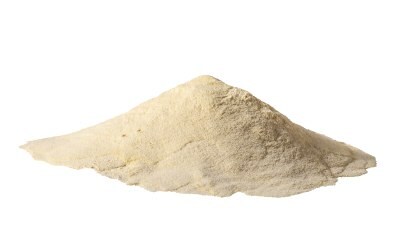Yeast Peptone, the Peptone of the Future
Yeast peptone is increasingly being used as an alternative constituent of complex culture media. Like yeast extract and peptone of animal or vegetable origin, other frequently used ingredients of complex media such as YM agar and broth, the chemical composition of yeast peptone is not precisely defined. However, with regard to general composition and properties it differs from traditional culture media ingredients, offering several advantages to make it the ideal choice for numerous applications in industry and the microbiology lab. Yeast peptone is typically made available as a powder or in a micro-agglomerated format.

What are yeast peptones?
All peptones are partial hydrolysates of proteins. They are widely used for industrial fermentations, for example to produce probiotics, and as a core ingredient of complex culture media by microbiological and cell culture laboratories. Peptones mainly contain peptides, but also amino acids as well as smaller amounts of inorganic salts and other compounds such as lipids, vitamins and sugars. While traditional peptones are produced with animal or vegetable protein, the alternative yeast peptones use selected, high-protein strains of baker's yeast (Saccharomyces cerevisiae) as their source. The raw material is hydrolyzed, separated and concentrated to produce a water-soluble, stable, safe and consistent quality peptone.
How do yeast peptones differ from other peptones?
Yeast peptones, like animal or plant based peptones, serve as a complex nitrogen source and contain growth factors such as active peptides, amino acids, vitamins, sulfur compounds and nucleotides. They are a source of phosphorus, which is important for energy storage and distribution within the cell, and they also contain minerals and trace elements, for example zinc, iron, potassium, sodium, calcium and magnesium, that activate metabolic reactions. As yeast-based nutrients (YBN), yeast peptones do not contain animal-derived material and are thus free of human and animal pathogens, neither do they contain pesticides, GMO material and allergens, and they have a lower CO2 footprint than peptones of animal origin. As the yeast peptones are not made of any animal or vegetable material, there are no obstacles to HALAL manufacturing, and there is usually no need to secure import or export permits.
Browse our range of halal-certified, dehydrated culture media for microbiological QC—in particular for environmental monitoring, as well as for aseptic process simulations (media fill trials).
Since they are derived from specific strains, yeast peptones are less variable in composition than plant and animal derived protein sources, so performance consistency is better. In fact, it is possible to produce yeast peptones with specific properties, for example a certain total nitrogen and amino nitrogen content, pH range, molecular weight distribution of peptides or growth promotion ability. The choice of yeast peptone can thus be used to influence parameters such as microbial growth, biomass, metabolite production, acidity, cell viability or cell resistance in the downstream process. Growth promotion tends to be much better than when using casein peptone.
Advantages of yeast peptones over animal and plant derived peptones:
- No animal derived material
- Free of animal and human pathogens
- Free of allergens, pesticides and GMO material
- No ethical or HALAL issues
- Greater batch consistency
- Greater flexibility thanks to modifiable specifications
- Lower CO2 footprint
- No need for import and export permits
Specifications of Available Yeast Peptones |
|---|
Typical Molecular Weight Distribution (in %) of the Soluble Fraction

Example of growth performance test with E. coli WDCM 00013/ATCC 25922 in buffered peptone water (BPW): all tested yeast peptones showed better growth promotion than casein peptone.

A. Optical density at 600 nm; B. CFU count (log values, in mL).
How do yeast peptones and yeast extract compare?
As partial hydrolysates of proteins, yeast peptones are richer in short and mid length peptide chains than yeast extract, but lower in free amino acids. While yeast extract contains a defined concentration of nucleic acids, yeast peptone does not. Therefore, yeast peptone is able to provide different nutritional properties to support the growth of different species and strains, activate different metabolisms and offer the opportunity to influence the fermentation process. Whether yeast extract or yeast peptone are preferable for a specific application depends on the nutritional needs of the microorganism and on the process’s target.
Differences Between Yeast Peptone and Yeast Extract
Yeast Peptone
- Amino Acids: Low in free amino acids
- Peptide Size: Rich in short and mid chain peptides
- Nucleic Acids: Not specified
Yeast Extract
- Amino Acids: Rich in free amino acids
- Peptide Size: Variable peptide length
- Nucleic Acids: Formulated to a defined concentration
Nutritional needs depend on the organisms and the process target; Yeast extract & yeast peptone answer different nutritional needs.
The Bottom Line
The fact that yeast peptones are more standardized and do not have the disadvantages of animal and plant derived peptones makes them very interesting as alternative peptones in culture media and for fermentations. Yeast peptones are also economical, can be produced in large volumes and provide the microbiologist with a broad range of properties.
To continue reading please sign in or create an account.
Don't Have An Account?